So you’ve decided to bite the bullet and purchase a set of aftermarket wheels and tires for your vehicle. If you haven’t already taken a brief look at what’s available out there, you’re in for a real surprise when you see how many options there are. Choosing the perfect wheel and tire setup for your car can quickly turn into a daunting task, but I’m going to attempt to keep it simple for you.
Aftermarket wheels and tires can either make or break your vehicle in terms of appearance and performance. Get this decision wrong and you’ll realize that you spent thousands of dollars just to downgrade your vehicle. Get it right, and you’ll have to get used to accepting compliments from strangers at gas stations! Upgrading your wheel and tire setup is one of the best ways to add character to your car or truck. Here’s how I did it on my MR2 and 4runner:

2 Different Ways to Go About It
There are essentially 2 ways to go about choosing the wheels and tires for your vehicle. Both options have the potential to give you the results you’re looking for, but it depends on how picky you want to be. Other factors are how common your vehicle is, and how popular your desired setup is.
1. Trust the manufacturer to sell you wheels that will fit your car
Many reputable wheel companies have already taken the time to research and dial in the perfect sizing for the most popular vehicles their customers own. This will save you all of the hassle and allow you to simply buy your wheels right off the shelf. But what if the company doesn’t offer vehicle-specific sizing, or theirs just aren’t aggressive enough for you? Well, you’ll have to do it yourself.
2. Choose your own specific sizing
It might seem like you need to be an engineer to come up with these numbers, but it doesn’t have to be that complicated. Just because you’ll be shopping based on the size doesn’t mean you have to jack your car up, rip it apart and take a hundred measurements. You’ll need a basic understanding of what the common measurements mean, and a vision of your preferred end result.
I’ve gone down both of these roads with my vehicles. The Volk Racing wheels on my MR2 were custom ordered for my specs, while the Method Race Wheels on my 4runner were purchased straight off the 4wheelparts website (although I did double check and research the sizing to confirm). In my case, Method’s sizing was dialed in perfectly and coming up with the specs myself would have netted the exact same results.
I didn’t think it was as important to nail the sizing right down to the millimeter on a lifted truck because the large gap between the tire and fender make any imperfections less noticeable. On a lowered car, it matters much more.
Obviously, purchasing your wheels by way of option 1 is about as straight forward as it gets. You don’t need any help there. So the rest of this post will be geared toward choosing the perfect wheel specs for yourself.

Function Over Form
Before we go any further, please allow me to give you some advice. You need to keep your vehicle’s performance in mind even if you’re buying new wheels solely for the looks. I know, I know, I understand all of the current “stance” trends but just because something looks cool, doesn’t mean it’s a good idea.
Remember that your tires are the only thing connecting your vehicle to the ground. You might not be concerned with setting lap records at the track, but at least keep your car’s handling in mind. Trends will come and go but a stylish, functional set of wheels will be cool forever. I’m not asking you to stick with the OEM sizing – just keep things in check.
Key Things to Know About Wheels:
Wheel Construction
Some aftermarket wheels are cast aluminum, while others are forged. In simplistic terms, this is just a tradeoff between a wheel that’s light/strong vs. inexpensive. Cast wheels are common thanks to their cheaper manufacturing process. Forged wheels are lighter and stronger, but you’ll pay a premium for them.
The choice is yours and it really comes down to how much money you want to spend. Every wheel can crack or break, but high quality forged ones are much less likely to fail.
If you plan to race or abuse your vehicle and you can afford them, forged wheels are a great idea. When dealing with a lower budget however, it’s totally fine to save money on cast wheels and put some of your savings towards a decent set of tires. Basically, don’t buy expensive wheels and wrap them with Chinese tires because you have no money left.
Wheel Size
The outside diameter of your wheels is mostly a cosmetic preference. For off-road vehicles, I prefer a diameter just big enough to clear the brakes and nothing more. This allows for the tallest sidewall possible for your tires which helps to soften the ride and contact more of the ground when you air them down off-road. I also think it looks awesome!
For all other vehicles, go with whatever diameter you like the look of. Just make sure you leave enough room to run a decent sized tire… rubber bands aren’t very comfy.
The width of a wheel plays a big role in what size tire you can run. It’s best to stay within or close to the manufacturer’s recommendations. If a tire company says that a certain tire size needs to be mounted on a 10″ wide wheel, don’t put it on a 6.5″. There’s a reason they’re giving you this info.
In general, the wider the wheel/tire, the better the handling. Just make sure they’ll fit!
Wheel Offset
I chose to keep this one separate from the other size specs because it’s important. It’s also one of the most common mistakes people make when they get their fitment wrong. I’m purposely not going to add any infographics showing all of the lines and measurements of a wheel because I think they tend to confuse people even more. Since we’re trying to keep it simple in this post, I’ll give you the raw basics:
- The wheel diameter is how tall the wheel itself is in inches (17 x 9 +35)
- The wheel width is how wide the tire’s mounting area is in inches (17 x 9 +35)
- The offset tells you whether the wheels will be sunken into the fenders, or stick out (17 x 9 +35)
As a rule of thumb, the lower the offset number, the further your wheels will stick out. This one is measured in millimeters. So for example, if +45 offset wheels are still sunken into your wheel wells a bit, switching to +35 will bring them out exactly 10mm.
Keep in mind that the width of your wheel will change how it fits with a certain offset so it’s important to make sure everything else stays equal when making these adjustments. Finding your baseline numbers and tweaking them is the shortcut to a perfect wheel and tire setup.
Find What Works, and Copy It
So how do you find your baseline numbers? There are very few vehicles out there that have yet to have aftermarket wheels installed on them. Chances are, somebody with the same car as you has already achieved a similar setup to the one you’re after.
This is where the good old interwebs come in. Spending the time to research other peoples’ setups is what will give you the “cheat code” allowing you to bypass all of the math and measurements. While I don’t recommend copying someone else’s build, there’s no harm in using their wheel specs as a starting point.
You can narrow your options down right away by deciding if you want more functional race wheels or fancy stylish ones. In most cases, the sizing you go with will depend very much on the style of wheel. For example, you probably won’t want to run tall, meaty tires on shiny luxury wheels.
Now that you’ve decided on the type of wheels you’re after, it’s time to hit the internet. Choosing an exact wheel model can be really difficult for some people, while others know exactly what they want right away. I personally knew that I wanted Method Standards before I even purchased my 4runner.
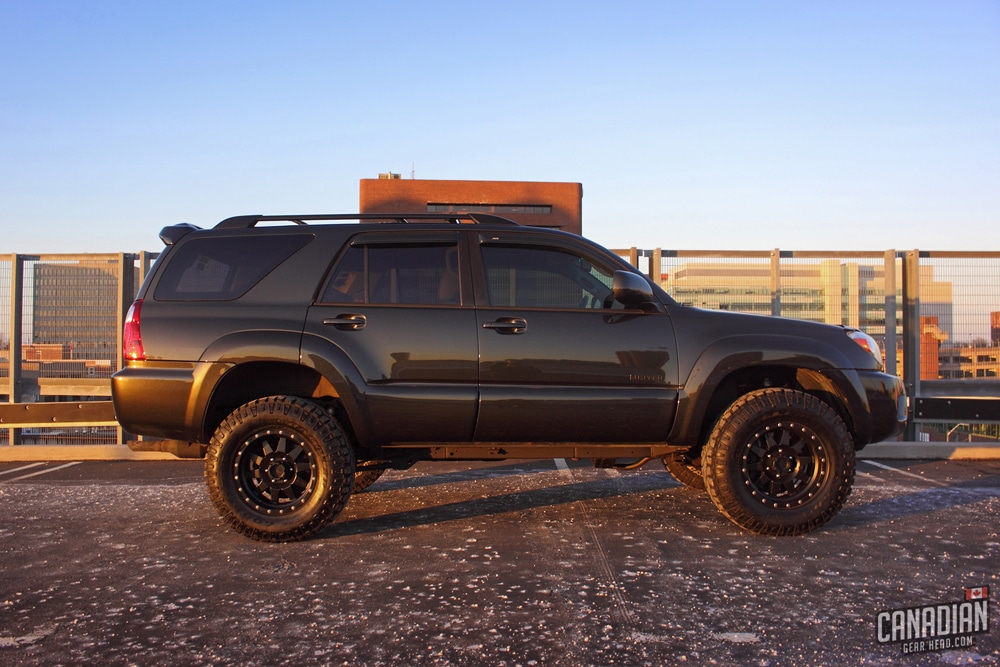
My 2007 Toyota 4runner is wearing 17×8.5″ Method Standards with 0 offset and 4.75″ backspacing. Read more about it here:
Scouring forums, facebook groups, and Google image searches will help you to pick out the exact wheels that you want. You’ll also want to take note of any modifications people had to do in order to make them fit. Things like rolling the fenders, cutting or relocating bumper tabs, trimming plastic, and aggressive alignments are all common adjustments many people make in order to fit the wheels they want. Knowing how far they’ve pushed the limits and deciding whether or not you’re willing to do the same is an important step.
Take note of the wheel specs of the cars with the look you’re aiming for. If a 9″ wide wheel with a +35 offset sits perfectly in the fender on that other guy’s car, it will on yours too (unless he isn’t being honest with his specs, or did “extra” work to make them fit). You need to have a better understanding of how things fit on your platform than just one example. Keep researching until you feel you’re an expert on what wheel sizes fit perfectly on your car.
If you still haven’t found anyone that has the exact look you want, you can still use others’ setups as a baseline. All the other wheels look too small to you? Go up in diameter. Want them to sit a bit farther out? Adjust the offset. You can tweak the sizing however you want, but the main thing is getting that baseline to start with.

My 1991 Toyota MR2 is wearing Volk Racing SF Challenges in 18×7.5″ +22 up front and 18×9″ +35 in the rear. Read more about it here:
In most vehicle-specific communities, there will be at least one “wheel fitment guru”. Pick their brain. These people typically have tested out many different setups and understand every little measurement that plays into how a wheel fits. I was fortunate enough to consult with one of these guys before buying the Volk SF Challenges for my MR2. Even if you’re just getting a second opinion on the specs you came up with, it’s absolutely worth it.
You can take things a step further if you know someone that’s capable with Photoshop. Having them come up with a quick rendering using a photo of your vehicle can be worth its weight in gold. I made one for the MR2 and was very glad I did. It really helps to be able to visualize the end result.
Define Your Budget
So you found a Mustang just like yours, wearing a set of 19″ HREs and your jaw dropped. That’s exactly the look you dreamed of! Unfortunately, reality is about to sink in as soon as you price those wheels out. A new set of HRE wheels could easily cost you over $10k! Your pockets might not be that deep, but that doesn’t mean your car can’t have a similar look. There are ways to save some money.
No, I’m not suggesting you divert your search towards a company selling knock-offs of those wheels (we’ll get to that later). Finding wheels with a similar style (for example, fat 5 spokes with a deep lip) from a less expensive company might be just what you need.
You can also save money by dropping down a size in diameter. 18″ wheels and tires are generally quite a bit cheaper than the 19″ versions of the same size. Every time you go up an inch in wheel size, things get more expensive.
Aside from the wheels and tires themselves, you’ll need to budget for a few more expenses. The cost of mounting and balancing them, getting the appropriate lug nuts and even hub centric rings all add up. You might want to get a fresh alignment as well in order to maximize the longevity of your new tires. Make sure you take all of this into account before ordering those shiny new wheels at the top of your price range.
Other Things to Consider:
Now it’s time to put your plan into action. To recap, you’ve already decided what style and stance you want, you have a baseline to start with as far as sizing, and you’ve laid out your budget. You’re close to making your purchase, but there’s still a few things to factor in before you pull the trigger.
Desired Tire Size
You don’t necessarily have to set this in stone, but you should at least have an idea of what size tires you want to run. This will affect whether certain wheel sizes “fit” or not. If you have your heart set on running a 315 tire, you’re probably not going to want to order 7″ wide wheels.
And on the opposite side of things, if your desired wheel specs are really aggressive, you might be forced to run a narrower tire in the name of gaining clearance. The best thing to do is to take note of the tire size others are running when you’re researching your wheel specs.
Current and Future Suspension Setup
Just because someone on the internet was able to fit a certain wheel and tire size at stock height (or lifted) doesn’t mean it will work with a lower ride height. Having adjustable coilovers helps a lot in making tweaks to your height, but not everyone has those. Make sure the person with the setup you want to mimic is using similar suspension to yours (or what you plan to use). Alignment specs, especially camber and caster, will play a role in what does and doesn’t rub as well.
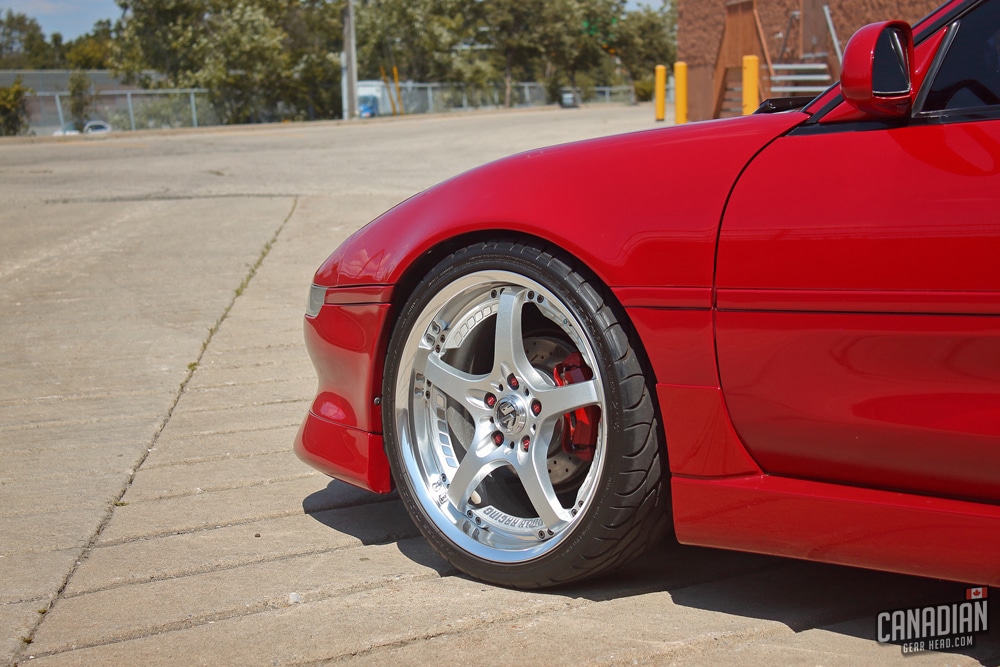
A Word About The Real vs Fake Wheels Argument
Anyone that’s been around the car community for any amount of time knows how touchy of a subject this is. I don’t want to preach about this. I have no problem with us staying in our own lane – you do your thing and I’ll do mine. I’ll briefly share my opinion though because, well, it is my blog after all.
Let me start by saying that buying expensive wheels just to brag about how much they cost is silly. There’s enough elitism going on in the car community as it is, we don’t need more of that crap. If that’s your issue with fake wheels, it’s possible that you’re not in this car game for the right reasons. Vehicles shouldn’t be status symbols. If I were fortunate enough to be able to afford a Ferrari, I’d be buying it for its character, technology, and racing heritage. Not to impress people.
To put it brutally honest though, I don’t like fake wheels or the companies that make them. It’s important to note that I’m referring only to the companies that knock off the designs of others, NOT the companies that sell their own inexpensive wheels.
I understand that there are a lot of people that can’t afford to buy high-end wheels and they shouldn’t be ashamed of that. There are plenty of companies that design their own wheels at a lower price point. For instance, many people are surprised to hear that you can get an authentic set of Enkei RPF-1 wheels for only a bit more than the many knock-off versions out there.
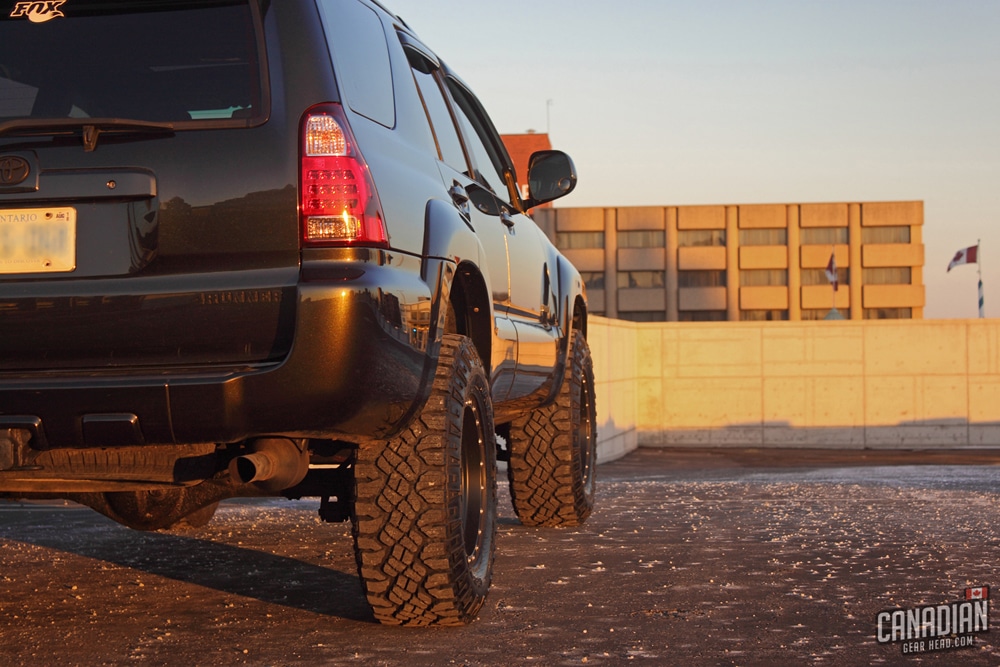

My problem is with stealing from others in order to make a profit. That’s just greasy. Part of the reason high-end wheels are expensive is because of the cost to design, manufacture and test them. I want to support the companies that are pushing the racing and aftermarket parts industry. These are the guys that are putting the time and effort into creating new and exciting things and that comes at a cost. They’re doing the work, they need to get paid. Honor the source.
Stealing a design and finding a loophole around the patent or trademark is just not an ethical business practice, regardless of the industry. That’s just a shady way of making money whether we’re talking about wheels, watches or handbags. I believe in adding value to the world, then being compensated for it.
For those that claim there’s only a certain number of ways to add spokes to a wheel, I partly agree. There are coincidences though, and then there are complete knock-offs. A company’s wheel looking exactly like the Volk TE37 (possibly one of the most popular racing wheels in the import community) is not a coincidence.
Discussing real vs fake wheels with people is a lot like talking about politics or religion. You’re not going to change anybody’s mind. I usually try to steer clear of this subject for that reason. But it’s something you need to think about when shopping for your wheel and tire setup, so I felt the need to explain my views on it. If you disagree with me, that’s ok. Do whatever makes you happy! Canadian Gearhead is all about having a serious passion for your car and that’s much more important than the sticker on your wheels.
Consider The Legal Side
All across the nation, modified cars and trucks are being put under the microscope more and more. There are certain laws that we’re supposed to follow when it comes to the way our wheels and tires fit. Failure to do so can result in getting a ticket or even having your vehicle removed from the road. A few of the current popular trends fall into this category. So if you choose to follow them, you might want to prepare for the consequences.
The Stance Movement
I’m all for a vehicle having an aggressive stance, as you can tell by the photos of my MR2 and 4runner in this article. But there’s a limit to how far you should push things. The most common things that Police will check for are whether your tires rub anywhere on the body and if your tires are wearing evenly.
If you’re unable to turn your wheels lock to lock, you might have a problem. If your tires are only contacting the ground with the inner inch of tread due to a massive amount of negative camber, you might have a problem.
Extremely Wide Wheels on Lifted Trucks
This is another one that Police seem to have a problem with. As a motorcyclist, I can understand where they’re coming from. I don’t feel like having my teeth knocked out by a stone that flew out of the tire of some SEMA truck in front of me on the highway. In most areas, if your tires stick out 1″ from the fenders or less, you’re good. Running “14 wides” and no fender flares might be a problem.
Your wheel and tire setup is your choice. But don’t say I didn’t warn you when you’re on the side of the road with cherries in your mirror!

Don’t Rush It
Choosing the perfect wheel and tire setup takes time, even if you’re using this shortcut. Don’t rush it. For the majority of us, this is a pretty big purchase. You don’t want to have buyer’s remorse after shelling out thousands of dollars.
Spend the time to look at as many cars on the internet as you can. Talk to other owners about what fits and what doesn’t. Research different wheel brands to find out what type of racing experience they have and how well they stand behind their warranties.
Also, think about the long-term future of your vehicle. Are you planning to add a bunch of horsepower or bigger brakes? Changes like that can make you wish you had planned for them when you ordered your wheels.
Protect Your Wheels
Once you have your new wheels, you might not want to leave them in the condition they left the tire shop. You’ll want to clean the slime off your tires from mounting them as well as getting rid of any fingerprints on your new wheels.
I would strongly recommend finding a good tire gel, and if you want the ultimate in protection, look into ceramic wheel coatings. They keep them looking shiny and make removing brake dust a breeze. My personal favorite coating is Gtechniq C5 Wheel Armor.
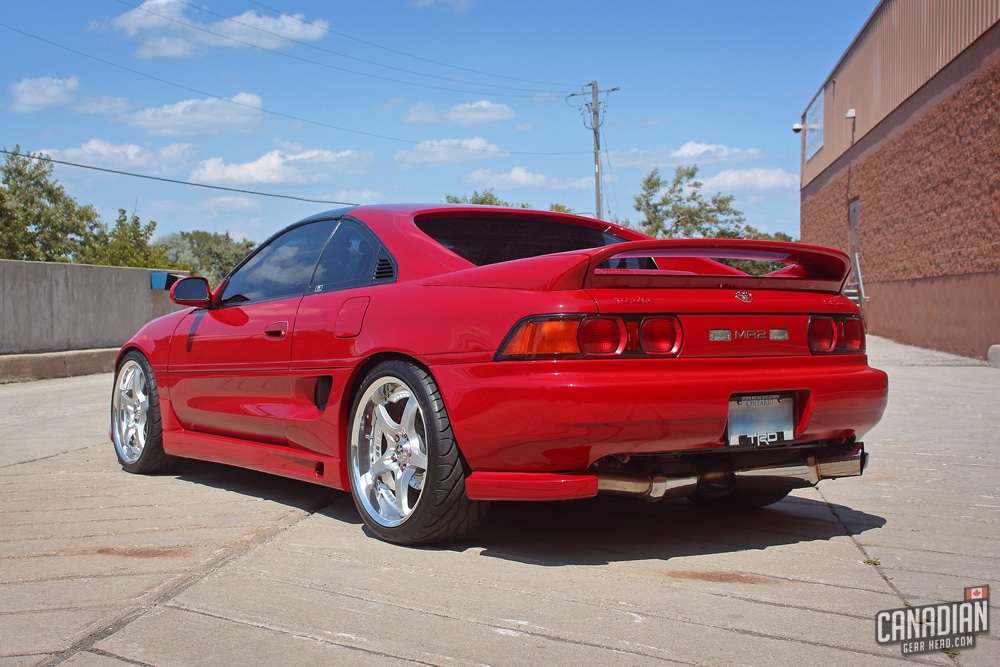
Conclusion
Hopefully, after reading this, you feel a bit more confident in making your decision on wheels and tires. It doesn’t have to be complicated – as long as you understand the basics and double or triple check your wheel specs – you’ll be fine.
I purposely left the technical side of things out of this post. There’s plenty of other articles out there that will take you more in depth into what every measurement means and how to find it. I would recommend this article from the friendly folks over at Speed Academy if that’s what you’re looking for.
If this article helped you with the purchase of your new wheel setup, I’d love to see your results. Tag me on Facebook, Instagram, Twitter, or leave a comment below.
Oh, and by the way. It’s a wheel, not a rim. The rim is the outside edge, the wheel is the whole thing. You didn’t think I’d write this post without addressing that, did you!?

Tim is the creator of Canadian Gearhead. His experience with auto detailing and working for Toyota shows through all of the articles posted here. He runs the Canadian Gearhead site and YouTube channel full-time now and currently owns a 2007 4runner, 2006 Tacoma, and 1991 MR2. Read more about Tim:




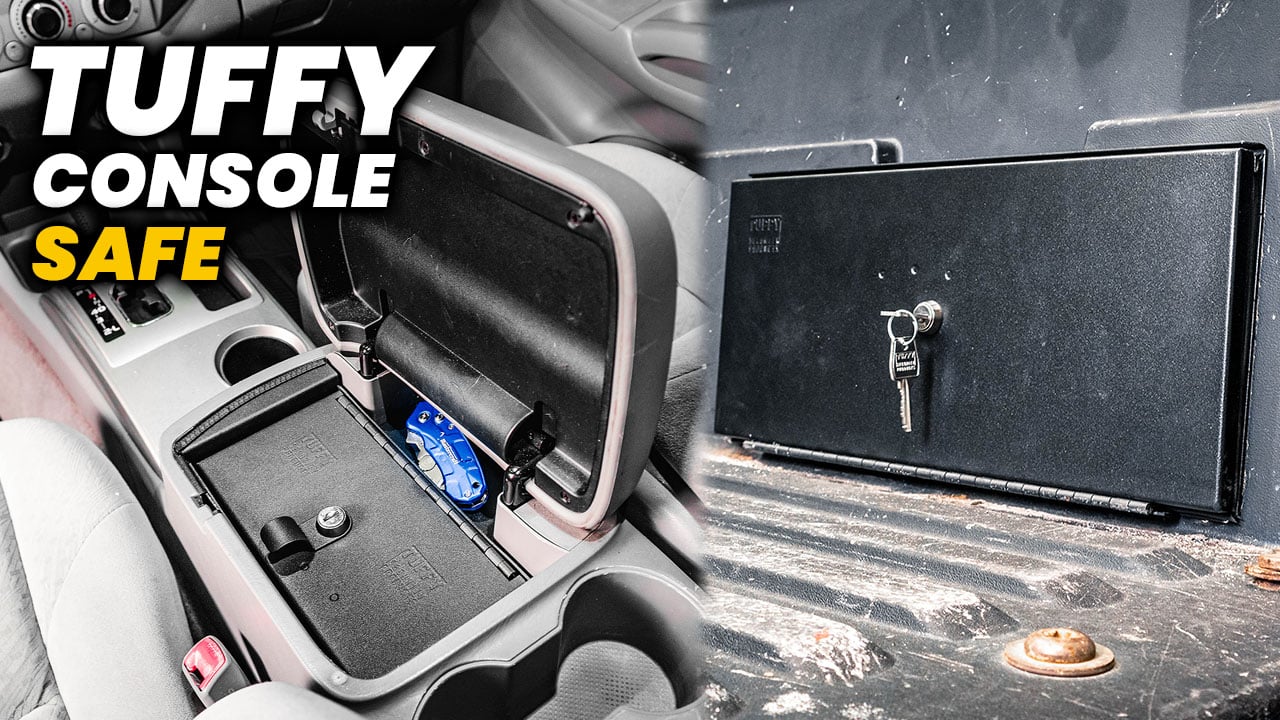
Leave a Reply